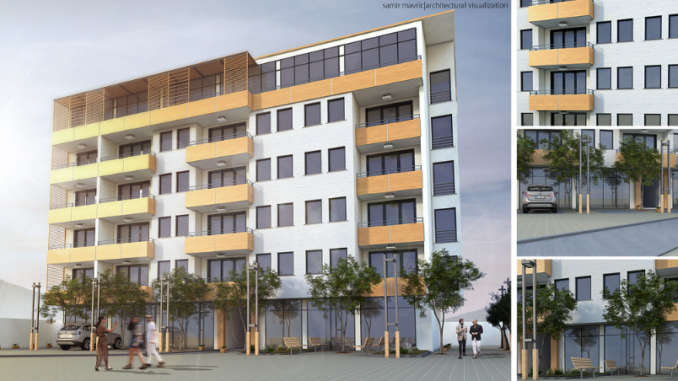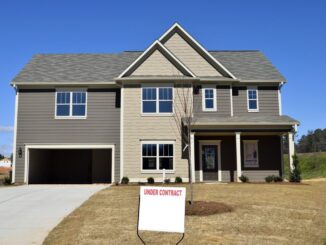
Borrowers enjoy plenty of options but locking in conduit loan rates offers an upside.
After years of decline, the U.S. conduit market is on an upswing. According to data from Bank of America, conduit issuance in the U.S. is expected to reach $35 billion, up from $30 billion in 2021. While the uptick is modest, it may also mark an inflection point.
“It’s the improvement in the resort and leisure hotel sector driven by pent-up demand for travel that is especially spurring growth in conduit issuance so far this year,” said Alan Todd, managing director & head of CMBS strategy for Bank of America. “We are seeing more of these properties in conduit deals, and that’s boosting deal flow.”
That is also good news for multifamily borrowers looking to lock in long-term, fixed-rate finance before interest rates climb even higher. Currently, on average 15 percent of all conduits are composed of multifamily loans, according to CMBS experts.
Conduits—which are large pools of collateralized loans across the full spectrum of real estate sectors and geographies—typically are 5-, 7- or 10-year fixed-rate loans sold on the secondary market. The pools hold non-recourse loans that generally range from $5 million to $100 million and up, and are available only for income-generating properties. Typically they cannot be used for land or construction loans. The average conduit size is $900 million. They are a segment of the CMBS market that diversifies risk for borrowers and provide stable cash flows over a long term.
Conduits are also characterized by factors that are influencing borrowers’ decisions: stringent reporting and documentation requirements, the need to work with servicers and special servicers and onerous prepayment penalties.

CMBS alternatives
While rising interest rates would seem to point toward a rush to this long-term fixed-rate financing vehicle, that hasn’t been the big motivator yet. Choices are unusually complex for investors and borrowers, even in today’s robust multifamily climate.
“Real estate borrowers are sitting on the sidelines mulling over their options while trying to figure out how to reset strategy,” said Laura Swihart, co-chair of the global finance and real estate law group at Dechert. She observes that borrowers are looking for flexibility in this uncertain economic environment.
“Many borrowers who want more structure flexibility are turning to floating-rate single asset single-borrower loans and a number of other options,” such as commercial real estate collateralized loan obligations, said Mark Ritchie, a principal at Gantry. “These deals are easier to evaluate, and their shorter time horizon makes it easier for those who want to refurbish, sell or refinance properties in a three- to five-year time frame.”
Last year there was an explosion in the use of CRE CLOs, likely because of the surge in appetite for a short-term, floating-rate product that is well-suited to properties in transition. Issuance hit $45 billion, according to research from Moody’s and Trepp.
These are securitizations of smaller pools of real estate loans with short- and long-term maturities. Unlike conduits, they come with floating interest rates, shorter loan terms and significant construction and future funding obligations. Mezzanine loans, loan participations and split promissory notes may also be held in a CRE CLO.
“Over the last few years multifamily lenders have realized that CRE CLOs don’t have the same constricts as conduits and are more dynamic, yet they still offer the risk diversification borrowers and investors are looking for,” Swihart said.
At CBRE, there has been huge demand from clients for CRE CLOs for multifamily financing since 2020, reports Kyle Draeger, senior managing director & head of Fannie Mae DUS lending. “They have been the financing vehicle of choice for transitional assets in the multifamily market,” he said, adding that borrowers use them for short-term financing to turn around rents and rehab buildings.
SASBs have also risen in popularity and are now dominating the CMBS issuance market. Last year, they accounted for nearly $80 billion in securitizations, Moody’s and Trepp reported.
For the same reasons, borrowers like single-loan, single-asset securitizations: they offer shorter-term, floating-rate debt, as more straightforward underwriting compared to conduits, which may comprise 50 to 100 loans. The SASB deals also often include trophy properties that attract investors.
Often a SASB securitization is an attractive vehicle for acquisition financing. For example, JLL Capital Markets used it in January for Carter Multifamily’s acquisition of a six-property multifamily portfolio located across Maryland, Virginia and Alabama. JLL secured a $318.5 million floating-rate bridge loan for the deal and then securitized it into a SASB. The transaction closed in 30 days.
Rising rate environment
“As interest rates rise, we may see deal flow change in the months ahead,” said Natalie Grainger, chief credit officer for CMBS at Greystone. “Multifamily borrowers may move quickly to lock in fixed-rate financing through conduits as floating rates become more expensive and less attractive.”

With interest rates on the rise, lenders will be more likely to be constrained by a property’s debt service coverage than LTV, Grainger notes. Lenders want to make sure that assets generate enough cash flow to cover debt service. And the mix in these securitized pools continues to represent a wide range of assets, from market-rate apartments and single-family rental communities to senior and affordable housing. Some innovative niches, such as RV parks, are also being included in deals.
At Sabal Capital Partners, conduit deals now being structured have coupons in the 4.75 percent to 5.5 percent range with a 70 percent to 75 percent LTV, depending on such factors as the property’s age and market location. Loans in the pool may have an interest-only period depending on the quality of the properties and underwriting metrics.
“Multifamily properties are very desirable for conduit deals because they offer stable cash flows, have favorable credit histories, and are therefore beneficial to overall pool execution,” said Barry Gersten, head of Sabal’s CMBS group.
Borrowers may find a conduit loan attractive because it may offer a greater variety of structuring options than agency loans. Deals may include Class A properties as well as Class B, Class C and mixed-use properties in secondary and tertiary locations, Gersten noted.
How the CMBS conduit market will shake out this year depends not only on demand for loans but also on investor enthusiasm for longer-duration bonds with stable performance.
Bond spreads have widened because of both the uptick in interest rates and market volatility, CMBS experts say. Grainger notes that spreads will vary based on debt yield, leverage and asset class, among other factors. In the multifamily sector they have gone up at least 20 basis points year-over-year, she adds.
Greystone is upbeat on the conduit market in 2022 for multifamily properties as well as for other asset categories. It has built a new CMBS lending team led by Rich Highfield, former president of Starwood Mortgage Capital, to expand its proprietary conduit platform.
As Swihart points out, conduits are attractive for multifamily borrowers under the right circumstances: “It all depends if you want to put loans on the books and warehouse them, or if you need more short-term financing flexibility.”
Source: Multihousingnews.com



